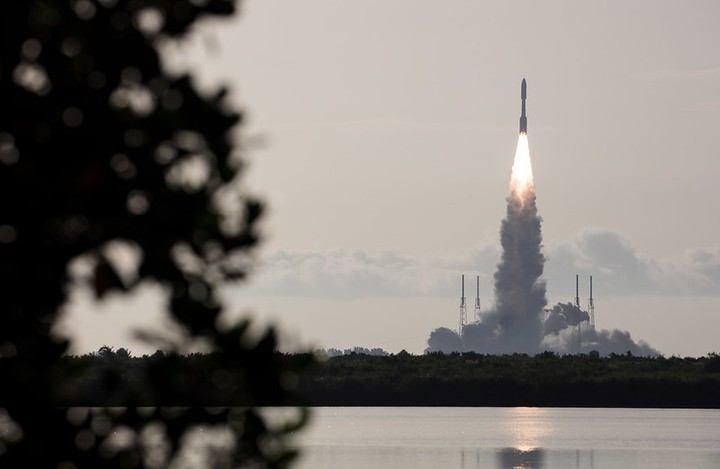UCSD Extension News Story

NASA’s Perseverance rover sets its eyes for microbial life on Mars after launch
Kritin Karkare
A pandemic may keep most of the human world confined to their homes, but it won’t keep a rover from successfully launching to Mars. The latest Mars rover from NASA, titled Perseverance, began its seven-month long trek to the Red Planet early Thursday morning from the Cape Canaveral Air Force Station in Florida. It leaves behind the humans that developed it in search of signatures of microbial life on Mars.
Like other space launches, NASA streamed the launch on YouTube so that any viewer could see Perseverance shoot up in the sky. The stream, which lasted over two hours and attracted over 2.5 million viewers, began around 7 a.m. EDT; the launch itself was scheduled for 7:50 a.m. EDT. To keep fellow launch enthusiasts entertained as they waited, NASA brought Derrol Nail from NASA Communications and Moogrega Cooper, a Mars 2020 Lead Planetary Protection Engineer, onto the stream to talk to engineers from the different teams that created Perseverance.
Mars 2020 Rover Credit NASA/JPL-Caltech
Perseverance’s launch marks another step advancing space exploration and astrobiology. Even though humans are not capable of landing on Mars just yet, the technology that Perseverance carries with it is aimed to bring it to fruition. The rover contains a bevy of the latest instruments – seven in total – that collect all sorts of data, like atmospheric and geological data, which will be useful to scientists back at home. In addition, the rover will collect rock samples and store them for a future mission to bring back to Earth.
Perseverance is not the only occupant onboard the Atlas V 541, the vehicle housing the rover. On its way to Mars too is a helicopter expected to be the first on another planet: Ingenuity. Unlike Earth, Mars has an atmosphere with 1% of the density of that of Earth’s atmosphere. Mars is also much colder. Though they have tested flying it in mock Mars environments, the Ingenuity engineers will get to test the Ingenuity on the real stage once the helicopter makes it to Mars.
One such gadget is the SHERLOC, or the Scanning Habitable Environments with Raman & Luminescence for Organics and Chemicals instrument. This device is supposed to look around to detect for minerals and organic molecules.
Mars 2020 SHERLOC Instrument Credit: NASA/JPL-Caltech
The rover follows in the footsteps of other NASA rovers that have been to Mars, with the first, Sojourner, making it to the planet in 1997. Sojourner demonstrated that rovers could in fact roam around the Mars terrain. The next two rovers, Spirit and Opportunity, landed in 2004 and found evidence Mars had running water before becoming a frozen desert. While the first three rovers are now out of commission, the fourth, Curiosity, has been trekking around Mars since landing in 2012. Once Perseverance lands in February 2021, the NASA team plans to have it stay for around two years.
Timing is Critical
But just getting the rover to the planet takes a lot of energy and timing. The launch period for the rover had to be between July 22nd and August 15th . “Technically, you could launch to Mars at any time if you had a rocket that was powerful enough” says Joshua Santora, NASA Communications Specialist. “But this is the launch period (every 26 months or so) that makes the most sense. You require the least amount of energy.”
While the launch is finished, the engineers are hard at work monitoring the Perseverance. They will be carefully keeping track of its flight path for another seven months until it lands.